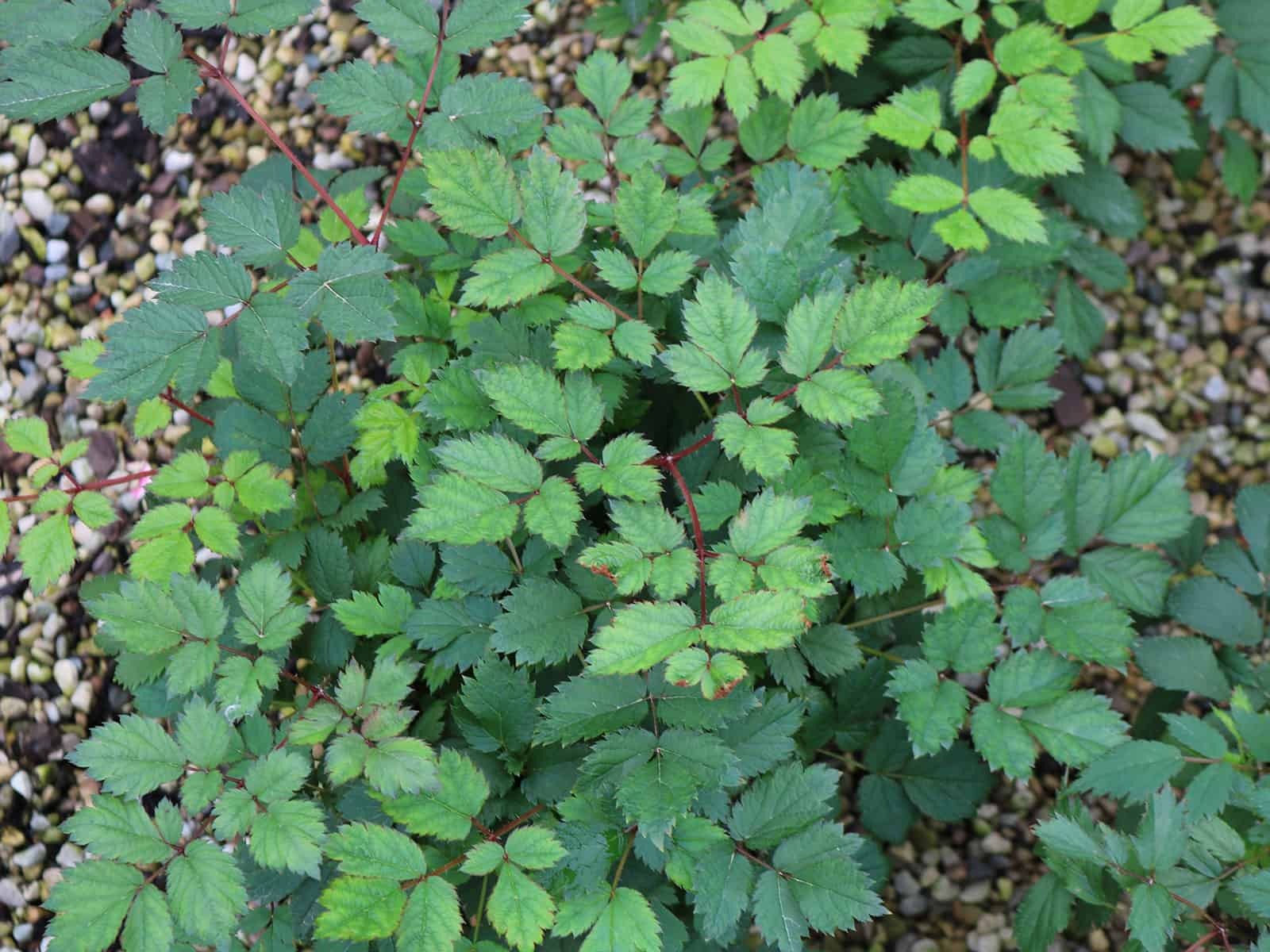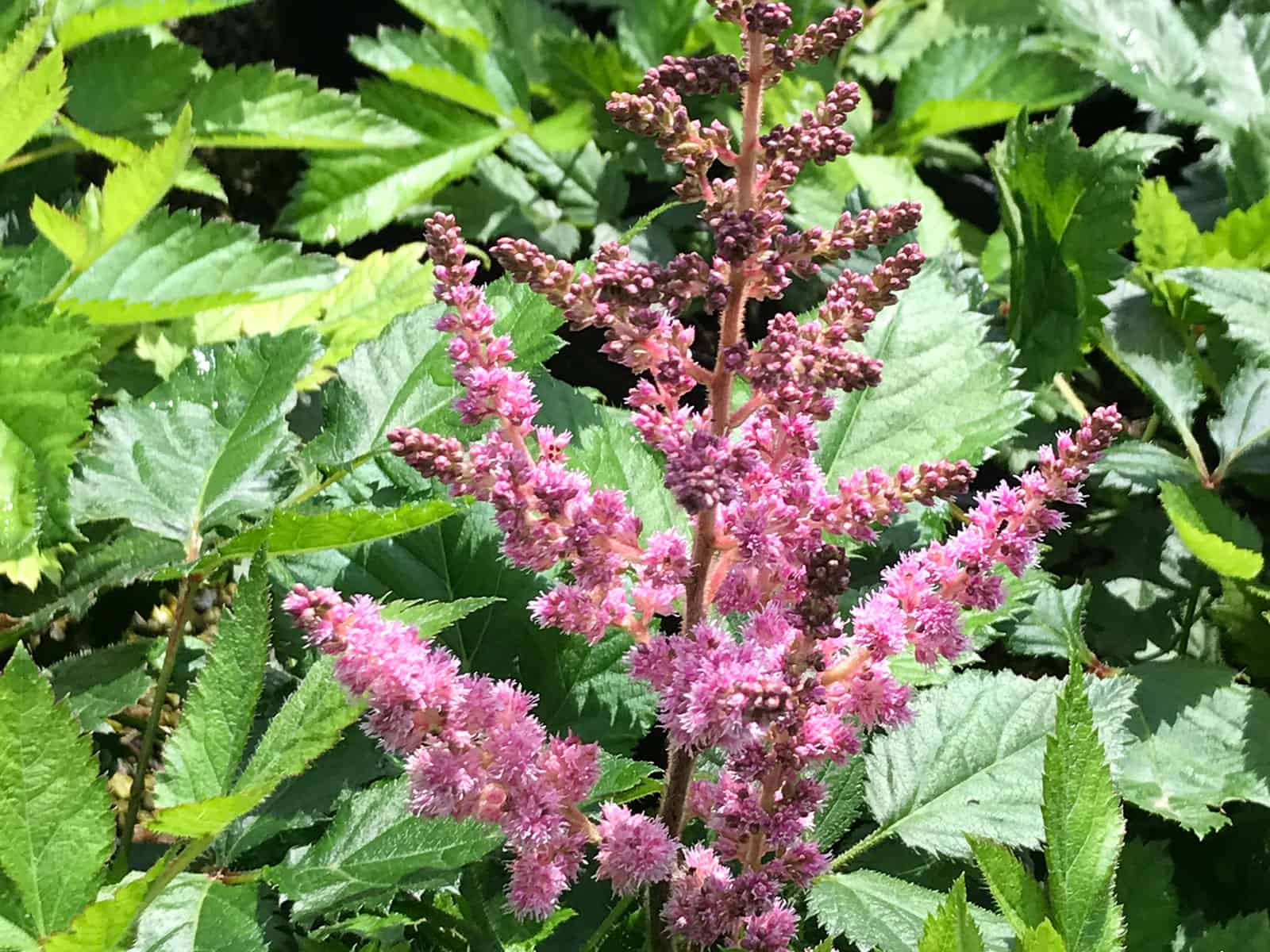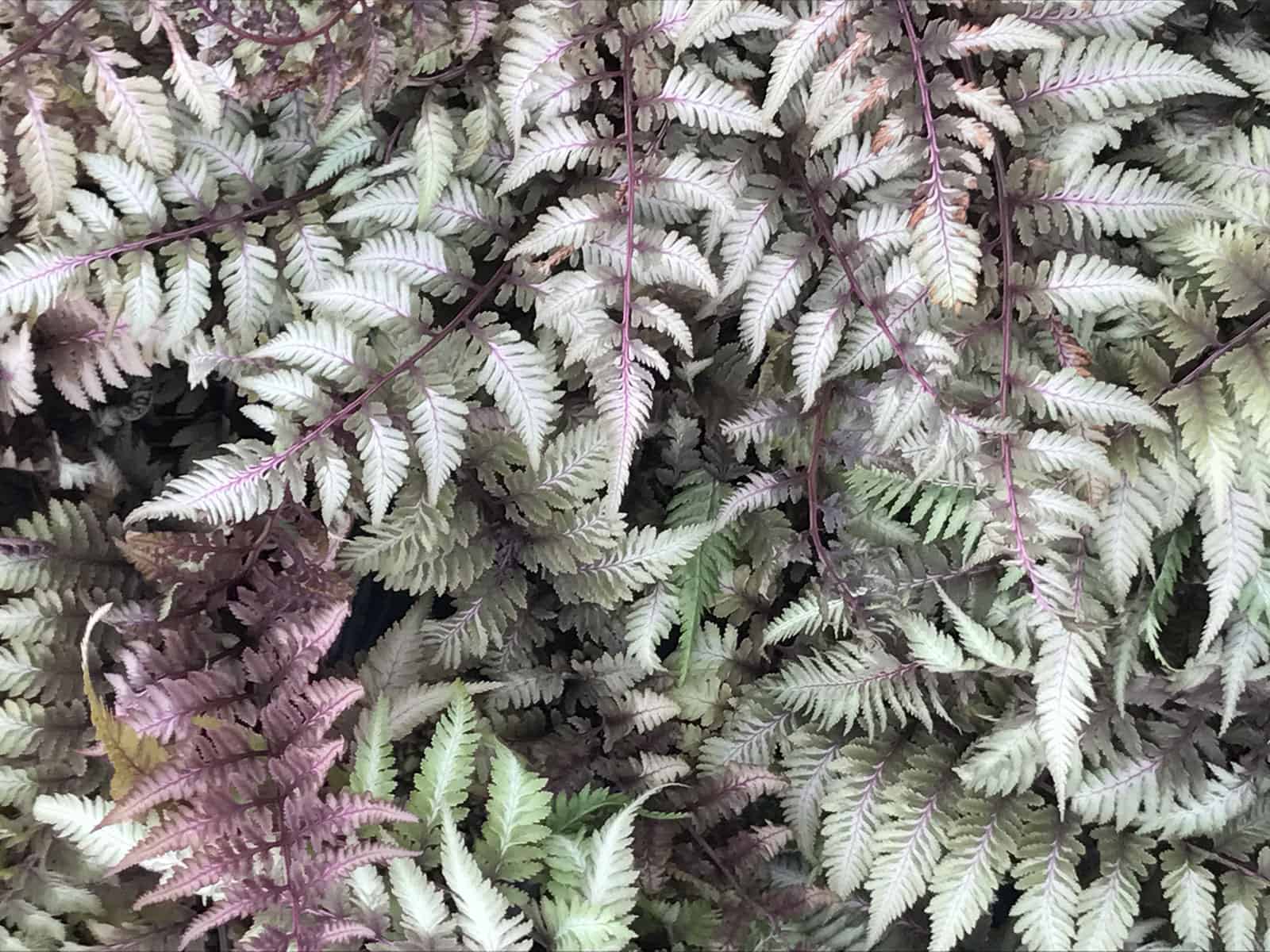
Heucheras are best grown in organically rich, humusy, medium moisture, well-drained soils in part shade. Parentage determines the best culture including optimum sun exposure. Unfortunately, the parentage of many hybrids in commerce today is unknown. Some hybrids will perform well in full sun, particularly in northern climates, but generally prefer some shade in the heat of the afternoon in southern locations. If grown in full sun, consistent moisture is very important. Scorch and general foliage decline may occur if soils are allowed to dry out. On the other hand, some hybrids perform well in shady locations, particularly if H. americana is a parent. Remove stems of faded flowers to encourage additional bloom. Foliage is essentially evergreen in warm winter climates. In cold winter climates such as St. Louis, the amount of retained foliage color in winter depends in large part upon the severity of the temperatures. A winter compost mulch applied after the ground freezes will help prevent root heaving. Divide clumps in spring every 3-4 years. Species plants may be grown from seed, but hybrids are usually divided in the garden.
Huge plumes of dark magenta red flowers in summer. Lush fern-like foliage emerges with bronze-red tints and matures to a deep dark green. Astilbe Montgomery makes an outstanding specimen when paired with white flowering plants.
Astilbe are mainstays of shade and woodland gardens. They combine well with other moisture loving plants like Brunnera, Ligularia, Lobelia and Hosta.
Lilac plumes over deep green glossy foliage of Astilbe Pumila blooms in late summer extending the season. Low-growing variety when planted in groups produces a dense cover. Chinensis is somewhat more tolerant of sun and drought conditions than other Astilbe.
Easily grown in average, medium moisture, well-drained soils in part shade to full shade. Prefers moist, humusy, organically rich soils. Soils must not be allowed to dry out. If regularly watered, foliage will usually remain attractive throughout the growing season. A summer compost mulch helps retain soil moisture. This Chinese astilbe variety is noted for having better sun and drought tolerance than most x arendsii hybrids. Removing faded flower stalks will not prolong bloom but may improve plant appearance, particularly if a ground cover look is desired. On the other hand, many gardeners leave the flower stalks in place after bloom because of the continuing ornamental interest of the dried seed heads. Divide clumps when overcrowding occurs (every 3-4 years).
Light pink flower plumes are striking against coarsely textured, blue-green foliage. The dense, upright form is perfect in a dappled shade border, woodland garden or as a groundcover. An excellent cut flower, fresh or dried. Tolerates drier soils than other astilbe. An herbaceous perennial.
Astilbe are a popular choice for shady gardens, where they perform well if given a rich, moist soil and regular watering. This recent midsize selection features showy, soft-pink plumes, over a compact mound of elegant, lacy blue-green leaves. Also thrives in tubs, or mixed containers. Excellent for cutting. Seed heads may be removed, or left on the plant for winter interest. Will tolerate full sun, in cool summer regions. USPP#11860, CPBR#1333: unlicensed propagation prohibited.
Astilbe are a popular choice for shady gardens, where they perform well if given a rich, moist soil and regular watering. This midsized selection features linen white plumes, over a compact mound of elegant, lacy bronzy-green leaves. Also thrives in tubs, and mixed containers. Excellent for cutting. Seed heads may be removed, or left on the plant for winter interest. Will tolerate full sun, in cool summer regions. USPP#18955, CPBRAF: unlicensed propagation prohibited.
Easily grown in humusy, organically rich, medium moisture, well-drained soil in part shade to full shade. Best sited in sheltered locations. Best frond color in light shade. Soil must not be allowed to dry out. Divide clumps in early spring. Naturalizes well by short, branching rhizomes and can form dense colonies in optimum growing conditions.
Athyrium niponicum var. pictum, commonly known as Japanese painted fern, is a rhizomatous, deciduous fern with an arching habit that typically grows to 18” tall. It features a slowly spreading clump of triangular, variegated fronds to 20” long. Fronds are a soft grayish-green with an overlay of silvery hues accented by contrasting dark maroon midribs. Silvering is best for several weeks in the spring, with fronds becoming greener as hot temperatures arrive.
Genus name comes from Greek athyros meaning doorless in reference to the slowly opening hinged indusia (spore covers).
Serbian bellflowers have an easy, undemanding habit. Creating a stream of lavender blue, the 1-inch-diameter star-shaped blossoms bloom reliably from late spring to early fall. The foliage remains evergreen in mild winters and needs to be sheared only once in a while to keep its appearance tidy. ‘Blue Waterfall’ flows beautifully along bed edges and through rock gardens in full sun to partial shade.
Campanula carpatica, the tussock bellflower or Carpathian harebell, is a species of flowering plant in the family Campanulaceae, native to the Carpathian Mountains of Central Europe. It is a low-growing herbaceous perennial, with long stems bearing solitary blue bell-shaped flowers. It was introduced to the Royal Botanic Garden at Kew in 1774 by Nikolaus Joseph von Jacquin. Several cultivars in shades of white, blue, pink and purple, have been developed for garden use.
Anemone ‘Wild Swan’ unlike the Japanese hybrids that bloom in fall only, this little beauty blooms from spring until frost. Dainty white flowers, with a blush of lavender/purple on the reverse side, dance above the lovely green foliage.









